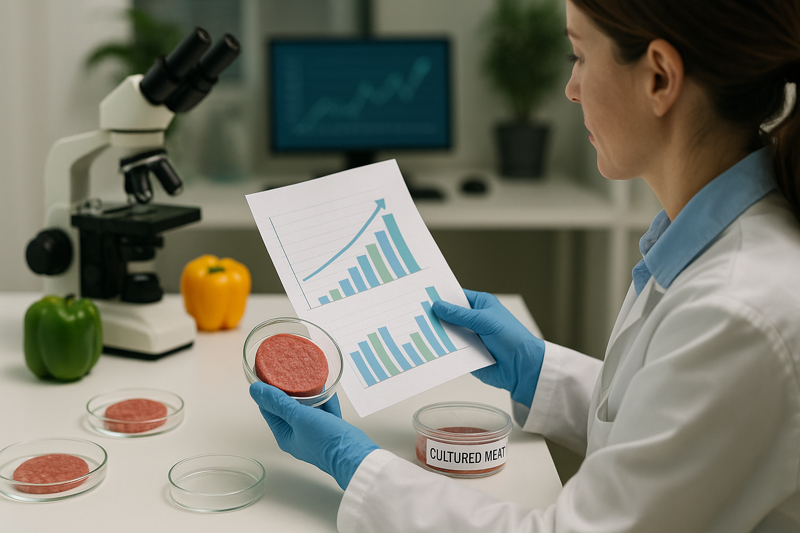Growing meat in a lab instead of on a farm is a promising way to produce food more sustainably and ethically. However, one of the biggest challenges has been the high cost of the special liquids (cell culture media) needed to grow cells. A key expensive ingredient is often sourced from animal blood.
Scientists at acib GmbH and partner Universities of the EU project FEASTS have made a breakthrough by finding affordable, food-grade alternatives to these expensive ingredients. By using common substances like methyl cellulose (found in many foods) and corn starch, they were able to develop new cell culture media formulations. These updated media work as well as, or even better than, those using the costly traditional components, significantly reducing the price of growing cells.
They tested these new formulations on different types of animal cells, including those relevant for cultivated meat (from cows, pigs, and chickens) and cells used to make medicines. The results showed that these low-cost alternatives were effective, although the best combination of ingredients varied depending on the type of cell. In some cases, they achieved a cost reduction of up to 73% for the cell culture media.
This research is a vital step towards making cultivated meat affordable and widely available. By replacing expensive, animal-derived components with cheaper, food-grade alternatives, the production process becomes more sustainable and economically viable. This could accelerate the availability of cultivated meat to consumers and potentially lower the cost of some medications produced using similar cell culture techniques, benefiting both the environment and human health. The findings highlight the potential of industrial biotechnology to create innovative solutions for global challenges.
Scientists at acib GmbH and partner Universities of the EU project FEASTS have made a breakthrough by finding affordable, food-grade alternatives to these expensive ingredients. By using common substances like methyl cellulose (found in many foods) and corn starch, they were able to develop new cell culture media formulations. These updated media work as well as, or even better than, those using the costly traditional components, significantly reducing the price of growing cells.
They tested these new formulations on different types of animal cells, including those relevant for cultivated meat (from cows, pigs, and chickens) and cells used to make medicines. The results showed that these low-cost alternatives were effective, although the best combination of ingredients varied depending on the type of cell. In some cases, they achieved a cost reduction of up to 73% for the cell culture media.
This research is a vital step towards making cultivated meat affordable and widely available. By replacing expensive, animal-derived components with cheaper, food-grade alternatives, the production process becomes more sustainable and economically viable. This could accelerate the availability of cultivated meat to consumers and potentially lower the cost of some medications produced using similar cell culture techniques, benefiting both the environment and human health. The findings highlight the potential of industrial biotechnology to create innovative solutions for global challenges.
